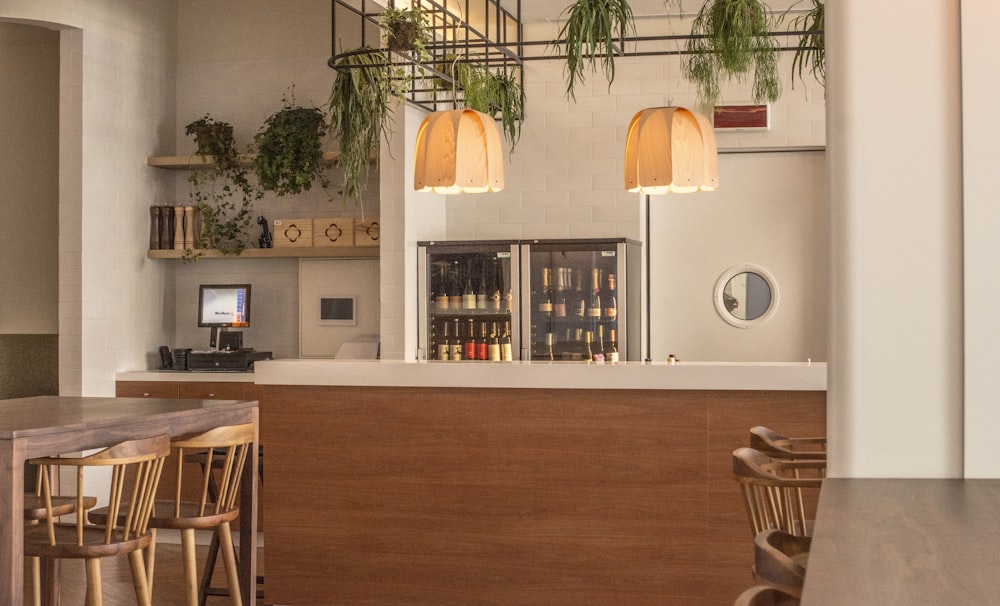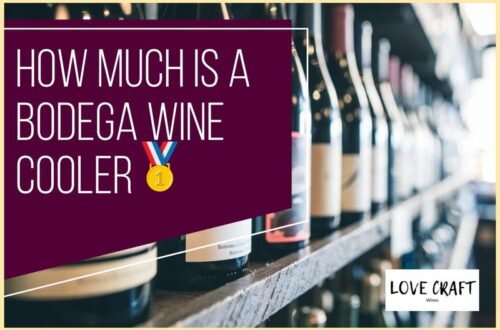You may think that wine, being made from grapes, would be naturally gluten-free. After all, grapes don’t contain gluten, so it would stand to reason that wine wouldn’t either. However, the truth is a bit more complicated than that.
While wine itself isn’t made with gluten-containing ingredients, there are several steps in the winemaking process that can introduce gluten into the final product.
In this article, we’ll explore the various potential sources of gluten in wine, the types of wine that are most likely to contain gluten, and the labeling and certification standards that can help you make informed decisions about which wines to choose.
Whether you’re someone with celiac disease or gluten intolerance, or you’re simply looking to avoid gluten in your diet, understanding the relationship between wine and gluten is an important step in making informed choices about what you consume.
Table of Contents
The Winemaking Process
You’re probably wondering how your favorite fermented grape beverage is made, and lucky for you, we’re about to give you a crash course on the winemaking process.
The first step in making wine is selecting the grape varieties to be used. Grapes differ in their sugar content, acidity, and tannin levels, all of which are important in creating a balanced and flavorful wine.
Once the grapes have been harvested, they are crushed to release the juice, which is then fermented. During the fermentation process, yeast consumes the sugars in the juice, producing alcohol and carbon dioxide.
After fermentation, the wine is clarified and aged to develop its flavor and texture. The aging process can take anywhere from a few months to several years, depending on the type of wine being made.
Some wines are aged in oak barrels, which can impart additional flavor and complexity to the wine.
Throughout the winemaking process, there are no potential sources of gluten, as all ingredients used are naturally gluten-free. However, that doesn’t mean that all wines are gluten-free, as there are other factors to consider, such as potential cross-contamination during production.
Potential Sources of Gluten in Wine
There might be sneaky sources of gluten lurking in your favorite bottle of vino. While wine is typically gluten-free, there are a few ways that gluten can find its way into the winemaking process. Here are some potential sources of gluten in wine:
- Wine filtration: Some winemakers use fining agents to clarify their wine. These agents can be made from animal products that contain gluten, such as egg whites or fish bladder. While the fining agents are typically removed from the wine before bottling, there is a risk of cross-contamination if the same equipment is used to produce both gluten-containing and gluten-free wines.
- Cross-contamination risks: Even if a winery doesn’t use gluten-containing fining agents, there is a risk of cross-contamination if the same equipment is used to produce both gluten-containing and gluten-free wines. This can happen if traces of gluten remain on the equipment or in the barrels used to age the wine.
- Flavored wines: Some winemakers add flavorings to their wines, which can contain gluten if they are made from barley or other gluten-containing grains. Flavored wines to watch out for include mulled wine, wine coolers, and fruit-flavored wines.
Now that you know some potential sources of gluten in wine, let’s take a closer look at the types of wine and their gluten content.
Types of Wine and Gluten Content
It’s important to know which types of wine you can safely indulge in without worrying about getting sick, so let’s break down the gluten content of different varietals.
Generally speaking, red wines have a lower gluten content than white wines. This is because red wines are typically fermented longer, which breaks down the gluten proteins. However, this may not always be the case, as some red wines may be aged in barrels that have been sealed with wheat paste, which would increase their gluten content.
On the other hand, white wines tend to have a higher gluten content because they are fermented for a shorter period of time. Additionally, some white wines may contain gluten due to the use of clarifying agents that contain wheat or barley.
When it comes to organic vs conventional wines, the gluten content can vary depending on the winemaking process.
Organic wines are made without the use of synthetic pesticides, herbicides, or fertilizers, which means that the grapes used to make them are less likely to have come into contact with gluten-containing substances. However, this does not guarantee that the wine is gluten-free, as there may be other sources of gluten in the winemaking process.
Conventional wines, on the other hand, may have a higher risk of containing gluten due to the use of additives and processing aids that may contain wheat or barley.
Labeling and Certification Standards
If you’re shopping for a bottle of your favorite fermented grape beverage, you might notice some unfamiliar labels and certifications, each with its own set of standards. To navigate the world of gluten-free wine, it’s important to understand the various labeling and certification standards.
Here are some key things to look for:
- Gluten-Free Labeling Regulations: The United States Food and Drug Administration (FDA) has established a set of standards for gluten-free labeling that apply to all packaged foods, including wine. To be labeled gluten-free, a product must contain less than 20 parts per million (ppm) of gluten.
- Gluten-Free Certification Programs: Several organizations offer gluten-free certification programs for food and beverage products, including wine. These programs require rigorous testing and verification processes to ensure that products meet strict gluten-free standards.
- Vegan Certification: Some wine producers choose to seek certification as vegan by organizations such as the Vegan Society. This certification ensures that the wine is free from animal products or byproducts, which can sometimes contain gluten.
- Organic Certification: While organic certification does not guarantee that a wine is gluten-free, it does ensure that the wine is produced without the use of synthetic pesticides, fertilizers, or other harmful chemicals that can potentially contain gluten.
Understanding these labeling and certification standards can help you make informed decisions about the wine you consume.
In the next section, we’ll explore some additional factors to consider when choosing gluten-free wine.
Making Informed Decisions About Wine and Gluten
When making decisions about what to drink, it’s important to be informed about the various factors that can impact your dietary needs and preferences. If you are someone who needs to avoid gluten due to celiac disease or gluten intolerance, then you may be wondering if wine is a safe choice.
While wine is typically made from grapes, which are naturally gluten-free, there are certain factors to consider that may impact its gluten-free status. One factor to consider is wine storage. If wine is stored in barrels or tanks that previously contained gluten-containing ingredients, then it may become contaminated with gluten. Additionally, some winemakers use gluten-containing products during the winemaking process, such as wheat paste to seal barrels.
However, there are certification programs, such as the Gluten-Free Certification Organization (GFCO), that can help consumers identify gluten-free wines that have been tested and verified to meet certain standards. It’s important to do your research and choose wines that have been certified or are stored and produced in a gluten-free environment to ensure that you can enjoy your drink without worry.
Frequently Asked Questions
Can wine contain gluten from the barrels it was aged in?
When it comes to barrel selection for wine aging, it’s important to consider the potential for gluten contamination.
While oak barrels are a popular choice, they can pose a risk for those with gluten sensitivities as they may have been sealed with a wheat-based paste.
Wineries that prioritize gluten-free production may opt for stainless steel tanks or carefully select barrels that have not been sealed with gluten-containing materials.
Additionally, wine filtration can play a role in reducing gluten content.
While wine itself is naturally gluten-free, it’s important to be mindful of production practices and potential sources of contamination.
Is there a risk of cross-contamination with gluten during the bottling process?
Are you concerned about the possibility of gluten cross-contamination during the bottling process of your favorite wine? Well, the truth is, there’s a potential risk of contamination.
During the bottling process, there are many factors that can affect the safety and purity of the wine, including contaminants and other allergens. However, there are also ways to mitigate these risks, such as using strict safety protocols and ensuring that the wine is certified gluten-free.
When it comes to gluten-free certification, standards can vary, so it’s important to research and choose a certification that’s reliable and trustworthy. Ultimately, while there’s a potential risk of contamination during the bottling process, with the right precautions and certifications, you can still enjoy your favorite wine with peace of mind.
Can wine be considered gluten-free if it contains yeast?
If you’re wondering whether wine can be considered gluten-free even if it contains yeast, there is a bit of controversy surrounding the use of yeast in wine production.
While yeast itself does not contain gluten, some people with celiac disease or gluten sensitivities may experience symptoms when consuming products made with yeast.
However, the FDA allows for gluten-free labeling on products that contain less than 20 parts per million (ppm) of gluten, which is considered a safe level for most people with gluten sensitivities.
Ultimately, it’s up to individual consumers to decide whether they feel comfortable consuming wine that contains yeast and whether they trust the gluten-free labeling on the bottle.
Are there any additives or fining agents used in winemaking that may contain gluten?
Imagine walking into a winery and being greeted by rows of barrels, each one filled with a unique blend of grapes.
While many assume that wine is naturally gluten-free, there are additives and fining agents used in the winemaking process that may contain gluten.
To ensure that wine is truly gluten-free, winemakers must use gluten-free additives and fining agents.
Common gluten-free fining agents include bentonite clay and activated charcoal, while gluten-free additives may include ascorbic acid and citric acid.
By using these gluten-free options, winemakers can create a delicious and safe product for those with gluten sensitivities.
Should individuals with gluten sensitivities avoid certain types of wine, such as fortified wines or dessert wines?
If you have gluten sensitivities, it’s important to know what types of wine are safe to drink. While wine is generally considered gluten-free, there are certain types that may be best to avoid if you have a sensitivity.
Fortified wines and dessert wines, for example, may sometimes be made with ingredients that contain gluten. However, there are still plenty of wine options that are safe for gluten-free individuals.
When it comes to dessert pairings, look for sweet wines like Moscato or Riesling that are naturally gluten-free and pair well with gluten-free desserts like flourless chocolate cake or fruit tarts.
For a wine and cheese pairing, opt for cheese that is naturally gluten-free, like cheddar or brie, and pair it with a dry white or red wine.
By knowing which wines are safe to drink and pairing them with gluten-free foods, you can still enjoy a delicious glass of wine without any adverse effects.
Conclusion
So, is wine considered gluten-free? The answer is yes, for the most part.
While there are potential sources of gluten in the winemaking process, such as using wheat paste for sealing barrels or using gluten-based fining agents, these are not commonly used practices in modern winemaking. Additionally, the fermentation process of wine naturally breaks down gluten proteins.
However, it’s important to note that some specialty wines, such as fruit wines or flavored wines, may contain added ingredients that could potentially contain gluten. It’s always best to check the labeling and certification standards of a wine before consuming it if you have a gluten intolerance or sensitivity.
Overall, wine can be a safe and enjoyable beverage choice for those on a gluten-free diet. Just be sure to do your research and make informed decisions about the types of wine you choose to consume.
As the famous saying goes, ‘In vino veritas’ – in wine, there is truth.








